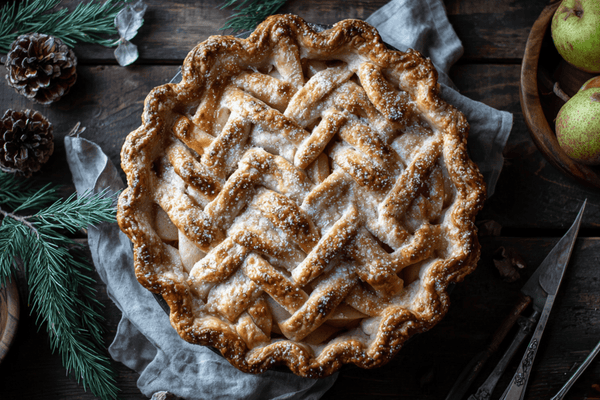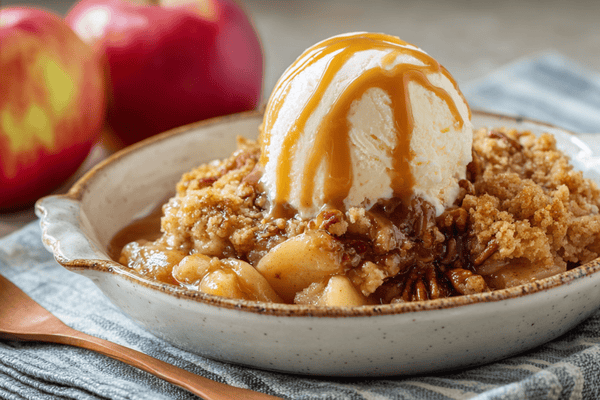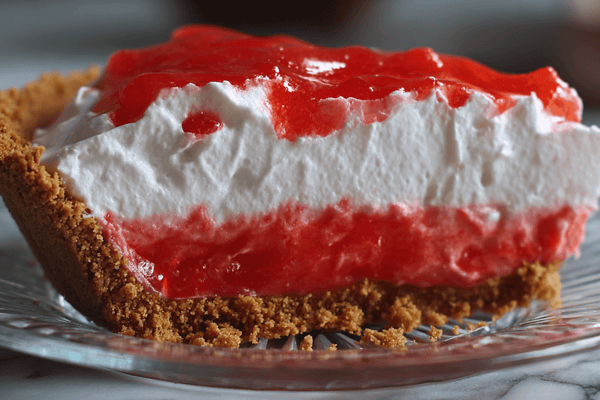- Quick Answer
- Ground Beef Safety: What You Need to Know
- Cooking Methods Comparison
- Step-by-Step Cooking Methods
- Visual Guide to Properly Cooked Ground Beef
- Tips for Cooking Frozen Ground Beef
- Alternative: Defrosting Ground Beef Safely
- Special Considerations for Vulnerable Groups
- Troubleshooting Common Issues
- Frequently Asked Questions
- Final Thoughts
Quick Answer
Yes, you can safely cook ground beef from frozen. The USDA confirms this is perfectly safe as long as you ensure the ground beef reaches the proper internal temperature of 160°F (71°C) and you follow proper food handling procedures. This article provides expert guidance on how to do this safely and effectively. If you prefer to thaw your ground beef first, check out our comprehensive guide on how to defrost ground beef safely.
Looking for more kitchen tips? Check out our guides on how to reheat pizza, how to grill steak, and how to cook mushrooms.
Ground Beef Safety: What You Need to Know
According to the USDA Food Safety and Inspection Service, ground beef must be cooked to an internal temperature of 160°F (71°C) to be considered safe. This temperature requirement is higher than for whole cuts of beef because grinding distributes any bacteria that may be present throughout the meat, rather than just on the surface. If you're wondering about shelf life, see our guide on how long does ground beef last in the fridge.
Common bacteria found in raw ground beef include:
- Escherichia coli (E. coli) O157:H7
- Salmonella
- Listeria monocytogenes
These bacteria can cause foodborne illness with symptoms ranging from mild gastrointestinal discomfort to severe illness, particularly in vulnerable populations such as young children, elderly people, pregnant women, and those with compromised immune systems.
Using a Food Thermometer Correctly
To ensure your ground beef is safely cooked:
- Insert the thermometer into the thickest part of the meat
- For patties, insert the thermometer from the side until the tip reaches the center
- Wait 10-15 seconds for an accurate reading
- Clean the thermometer with hot soapy water between readings
- Check multiple spots to ensure the entire portion has reached 160°F (71°C)
For steak lovers, we also have a guide on the perfect salmon internal temperature and chicken thigh temperature to help you master cooking all types of proteins.
Preventing Cross-Contamination When Cooking Frozen Ground Beef
When cooking ground beef from frozen, follow these important safety measures:
- Designated Cutting Board: Use a separate cutting board exclusively for raw meat. Our guide on a guide to chopping boards can help you choose the right type for different kitchen tasks.
- Drip Management: Place a rimmed baking sheet under your cooking vessel to catch any drips as the frozen beef begins to thaw.
- Hand Washing: Wash hands thoroughly with soap and warm water for at least 20 seconds after handling frozen raw meat.
- Utensil Separation: Use separate utensils for handling raw meat and cooked meat.
- Surface Sanitizing: Clean all surfaces that contacted the frozen meat with hot soapy water followed by a sanitizing solution (1 tablespoon bleach per gallon of water).
- Avoid Splashing: When adding frozen ground beef to hot liquids, carefully place it in rather than dropping it to prevent splashing.
Learn more about kitchen hygiene in our article on when must a knife be cleaned and sanitized.
Cooking Methods Comparison
Before diving into specific techniques, here's a quick comparison of the most effective methods for cooking ground beef from frozen:
Instant Pot
- Cooking Time: 25 minutes
- Best For: Large batches, meal prep
- Pros: Hands-off, consistent results
- Cons: Requires special equipment
- Texture Result: Moist, tender
Stovetop saucepan
- Cooking Time: 20-30 minutes
- Best For: Dishes that need browning
- Pros: Greater control, no special equipment
- Cons: Requires attention, scraping
- Texture Result: Browned, flavorful
Air Fryer
- Cooking Time: 15-20 minutes
- Best For: Pre-formed patties
- Pros: Quickest method
- Cons: Drier results, limited quantity
- Texture Result: Less juicy, browned exterior
Pressure Cooker
- Cooking Time: 25 minutes
- Best For: Large batches
- Pros: Consistent results
- Cons: Requires special equipment
- Texture Result: Moist, tender
Step-by-Step Cooking Methods
Instant Pot Method
Best for: Large batches of ground beef for meal prep
Equipment needed: Instant Pot, trivet/steamer insert
Time required: 25 minutes (+ pressure release time)
Difficulty level: Easy (minimal attention required)
Step-by-Step Instructions:
- Place the trivet (steamer insert) into the Instant Pot
- Add 1 cup of water to the bottom of the pot
- Place the frozen ground beef block on the trivet
- Close the lid and set valve to sealing position
- Cook on high pressure for 25 minutes
- Allow for a slow natural pressure release (about 10 minutes)
- Check internal temperature in multiple spots to ensure it reaches 160°F (71°C)
- Break apart and use in your favorite recipes
Pro Tips:
- Limit cooking to 1800g (4lbs) or less of ground beef at one time for even cooking
- After cooking, you can brown the beef using the Sauté function if desired
- The resultant liquid can be saved as a flavorful beef stock for future recipes
Safety Checkpoint:
Always verify the internal temperature has reached 160°F (71°C) using a food thermometer in multiple locations throughout the meat.
Stovetop Method
Best for: Dishes requiring browning like tacos, meat sauce, chili
Equipment needed: Large skillet with lid
Time required: 25-30 minutes
Difficulty level: Medium (requires attention)
Step-by-Step Instructions:
- Place frozen block in skillet with 1 inch of water
- Cover and bring to simmer over medium heat
- As outer layer browns, scrape off cooked portions (approximately every 3-5 minutes)
- Continue process until only a small frozen portion remains
- Add aromatics (onions, garlic) if using
- Break apart remaining meat and brown thoroughly
- Check temperature in several locations (must reach 160°F/71°C)
This method is perfect for recipes like sizzling beef stir fry or classic chili. Having the right tools is essential - check out our guide on what makes a great cooking pan to ensure you have the best equipment for the job.
Pro Tips:
- Use a metal spatula with a sharp edge for easier scraping
- Keep water level consistent (about ¼ inch) to prevent burning
- This method works best for recipes where you'll be adding other ingredients
Common Issues:
-
Problem: Meat sticking to pan
Solution: Ensure adequate water and scrape frequently -
Problem: Uneven cooking
Solution: Break into smaller pieces as soon as possible
Pressure Cooker Method
Best for: Larger quantities of ground beef
Equipment needed: Stovetop pressure cooker
Time required: 25 minutes (+ pressure release time)
Difficulty level: Easy (minimal attention required)
Step-by-Step Instructions:
- Place the trivet in the pressure cooker
- Add 1 cup of water to the bottom
- Place up to 900g (2lbs) of frozen ground beef on the trivet
- Secure the lid and bring to high pressure
- Cook at high pressure for 25 minutes
- Allow for a slow natural pressure release (about 10 minutes)
- Verify internal temperature reaches 160°F (71°C)
- Break apart the cooked beef for use in recipes
Pro Tips:
- Follow your pressure cooker's manual for exact pressure settings
- The beef will not be browned, so you may want to sauté it afterward if needed
- This method is excellent for meal prepping large quantities
Air Fryer Method
Best for: Pre-formed frozen patties
Equipment needed: Air fryer
Time required: 15-20 minutes
Difficulty level: Easy (minimal attention required)
Step-by-Step Instructions:
- Preheat air fryer to 375°F (190°C) if recommended by manufacturer
- Place frozen patties in the air fryer basket in a single layer
- Cook for 15-20 minutes, flipping halfway through
- Check internal temperature to ensure it reaches 160°F (71°C)
- Let rest for 2-3 minutes before serving
If you enjoy cooking with your air fryer, check out our other air fryer recipes like crispy air fryer potato wedges, air fryer chicken tenders, and air fryer asparagus.
Pro Tips:
- Avoid overcrowding the basket to ensure even cooking
- This method produces drier patties than grilling
- Works best with pre-formed patties rather than a block of ground beef
Best for Recipes:
- Hamburgers
- Sliders
- Crumbled on salads
Visual Guide to Properly Cooked Ground Beef
When properly cooked, ground beef should display these characteristics:
- No pink color visible anywhere in the meat
- Juices run clear (not pink or red)
- Internal temperature of 160°F (71°C) when measured with food thermometer
- Consistent brownish color throughout
Once your ground beef is properly cooked, you can use it in many recipes like hamburger casserole, layered taco lasagna, or spaghetti bolognese.
Tips for Cooking Frozen Ground Beef
1. Increase Your Cooking Time
When cooking frozen ground beef, you'll need approximately 50% more cooking time compared to thawed beef. Even with this extra time, most methods will still have your ground beef ready in under 30 minutes, making it a convenient option for quick meals.
2. Wait to Season
Add seasonings and sauces after your frozen beef has finished cooking. Seasonings won't adhere properly to frozen meat and may wash off during the cooking process. Contrary to some cooking myths, seasoning after cooking frozen ground beef doesn't negatively impact flavor development.
3. Monitor the Texture
The texture of properly cooked frozen ground beef should be nearly indistinguishable from beef that was thawed before cooking. The key is ensuring it's cooked thoroughly and broken apart properly once it begins to thaw during the cooking process. If you're looking to enhance your cooking techniques, our guide on how to saute provides additional tips for achieving perfect texture in all your dishes.
4. Check the Temperature
Always use a food thermometer to verify your ground beef has reached the safe internal temperature of 160°F (71°C). Check multiple spots throughout the meat to ensure even cooking, especially when cooking from frozen.
Alternative: Defrosting Ground Beef Safely
While cooking directly from frozen is convenient, sometimes you may prefer to defrost your ground beef first. For a comprehensive breakdown of thawing methods, see our detailed guide on how to defrost ground beef safely. Here's a quick overview of safe methods:
Refrigerator Method (Recommended)
- Place packaged ground beef on a plate to catch any drips
- Leave in refrigerator for 24 hours or until completely thawed
- Safe to use for up to 2 days after thawing
- Most food-safe method that preserves quality
Cold Water Method
- Seal beef in a leak-proof bag
- Submerge in cold water (changing water every 30 minutes)
- Takes approximately 1 hour per pound
- Cook immediately after thawing
- Do not refreeze without cooking first
Microwave Method
- Use defrost setting at 50% power
- Defrost 2-3 minutes initially, then check and flip
- Continue checking and flipping every 45 seconds
- Cook immediately after thawing
- Not recommended for quality preservation
Special Considerations for Vulnerable Groups
If cooking for young children, pregnant women, elderly individuals, or immunocompromised people, take these extra precautions:
- Always use a food thermometer to verify 160°F (71°C) internal temperature
- Be especially vigilant about cross-contamination
- Consider using the refrigerator method for defrosting to minimize bacterial growth
- Serve immediately after cooking to avoid temperature fluctuations
Troubleshooting Common Issues
Uneven Cooking
- Problem: Outside cooked but inside still frozen
- Solution: Reduce heat and extend cooking time, breaking apart meat as it thaws
Excess Moisture
- Problem: Ground beef releases too much liquid
- Solution: Cook uncovered toward the end to allow evaporation
Freezer Burn Impact

- Problem: Freezer-burned beef has dry spots and off flavors
- Solution: Trim obviously damaged portions before cooking, consider using in highly flavored dishes like chili or spaghetti bolognese
For more cooking troubleshooting, check out our guide on how to tell if beef is bad to ensure you're always starting with quality ingredients.
Frequently Asked Questions
Q: How long does it take to cook ground beef from frozen?
A: Depending on the method, it typically takes 15-30 minutes, which is about 50% longer than cooking thawed ground beef.
Q: Can I refreeze ground beef after cooking?
A: Yes, you can safely refreeze ground beef after cooking it. However, you should never refreeze raw ground beef that has been thawed, as this increases the risk of bacterial growth.
Q: Why is the temperature requirement higher for ground beef than for steak?
A: Ground beef must be cooked to 160°F (71°C) because the grinding process distributes any bacteria throughout the meat, while in steaks, bacteria remain primarily on the surface and are killed quickly during cooking.
Q: Does cooking from frozen affect the nutritional value?
A: No significant nutritional differences exist between cooking ground beef from frozen versus thawed. The protein, fat, and mineral content remain essentially the same.
Q: How can I tell if my ground beef has gone bad before cooking?
A: Even when frozen, ground beef can eventually go bad. Signs include freezer burn (white, dry patches), ice crystals inside the packaging, or off odors after cooking. For quality, use frozen ground beef within 4 months.
Q: Is it better to defrost ground beef before cooking or cook it from frozen?
A: Both methods are safe when done correctly. Cooking from frozen is faster and more convenient, while defrosting first can provide more even cooking and better seasoning absorption. For detailed defrosting instructions, see our guide on how to defrost ground beef.
Final Thoughts
Cooking ground beef from frozen is not only safe but can be a real time-saver in the kitchen when done properly. The key is ensuring the meat reaches the proper internal temperature of 160°F (71°C) and following good food safety practices to prevent cross-contamination.
Each cooking method offers different advantages, so choose the one that best suits your specific recipe and equipment. If you have time to plan ahead, properly defrosting your ground beef can offer benefits like easier seasoning and more even cooking. By following the guidelines in this article, you can confidently cook ground beef directly from frozen while maintaining both safety and quality.
Remember that food safety is particularly important when handling ground meats, so always verify proper cooking temperatures with a food thermometer and practice good kitchen hygiene to prevent foodborne illness. For more tips on kitchen safety, check out our guide on knife and basic kitchen safety rules and how to prevent knife cuts in the kitchen.
To further improve your culinary skills, explore our articles on how to cut an onion without crying and how to saute: a beginner's guide to cooking with confidence.
This article was last updated on April 15, 2025, to reflect current USDA food safety guidelines.







